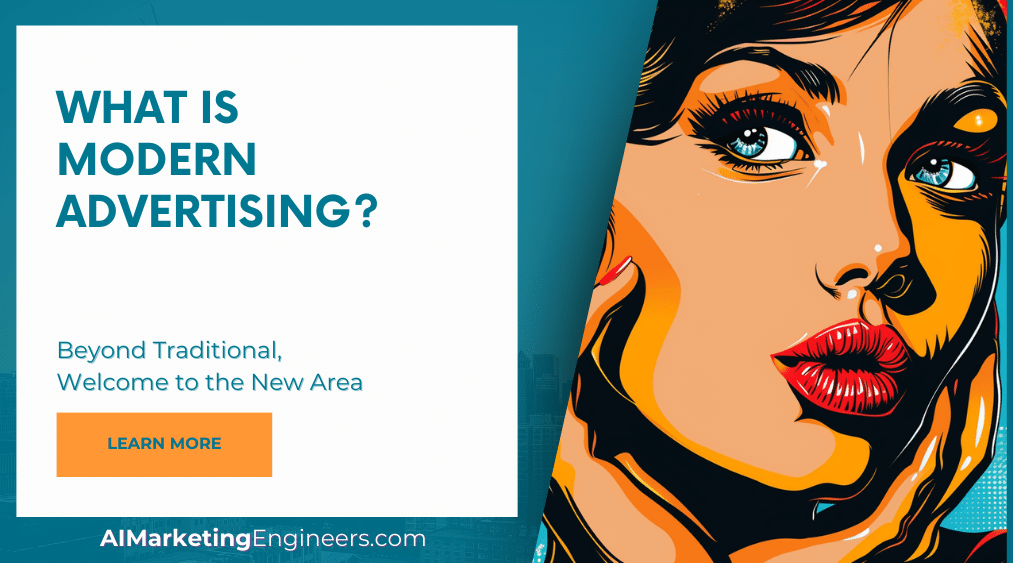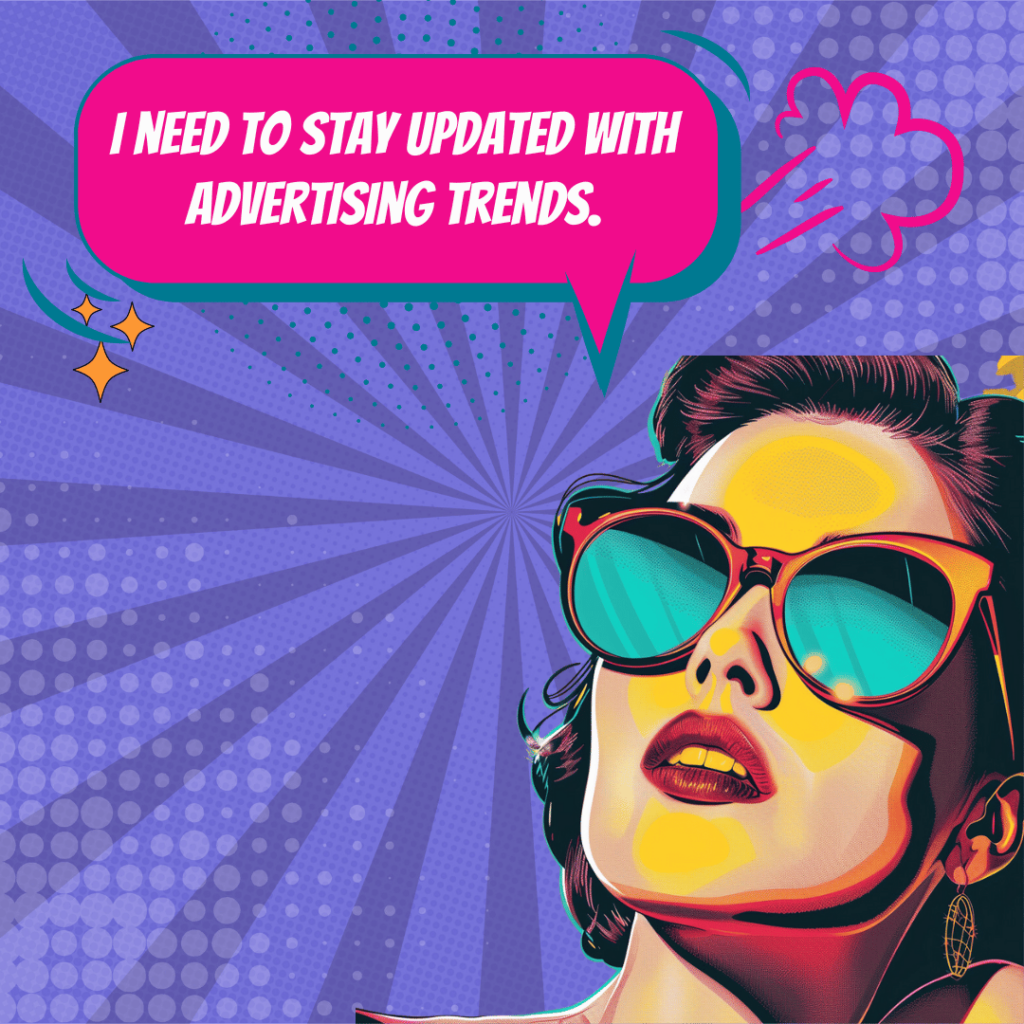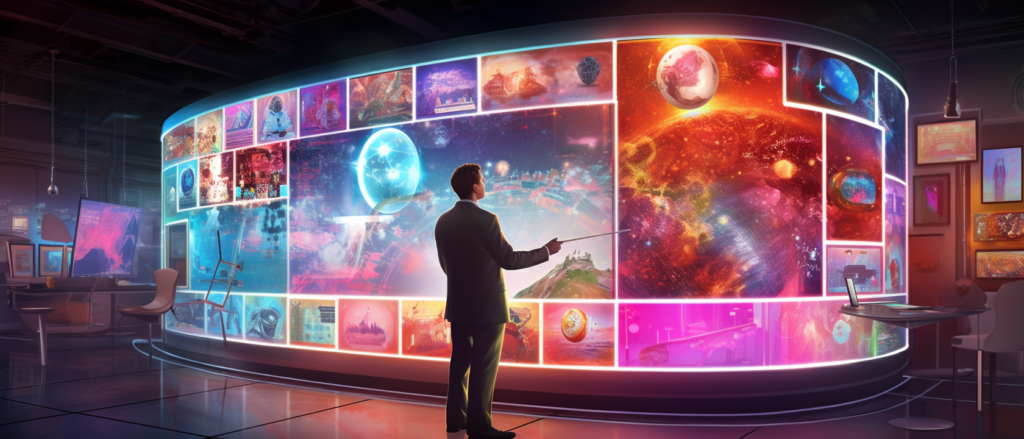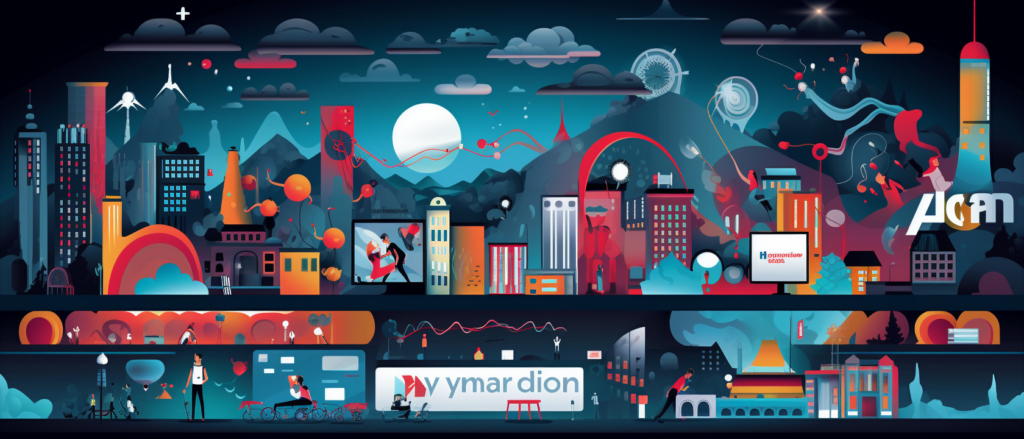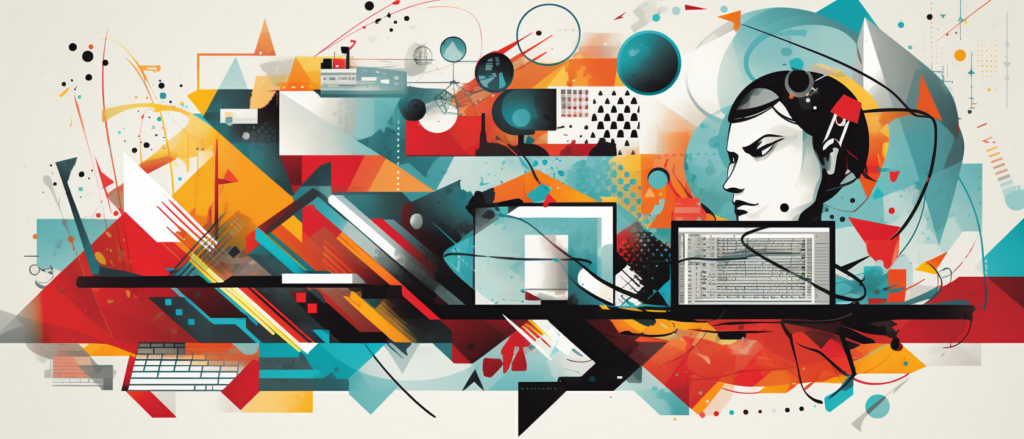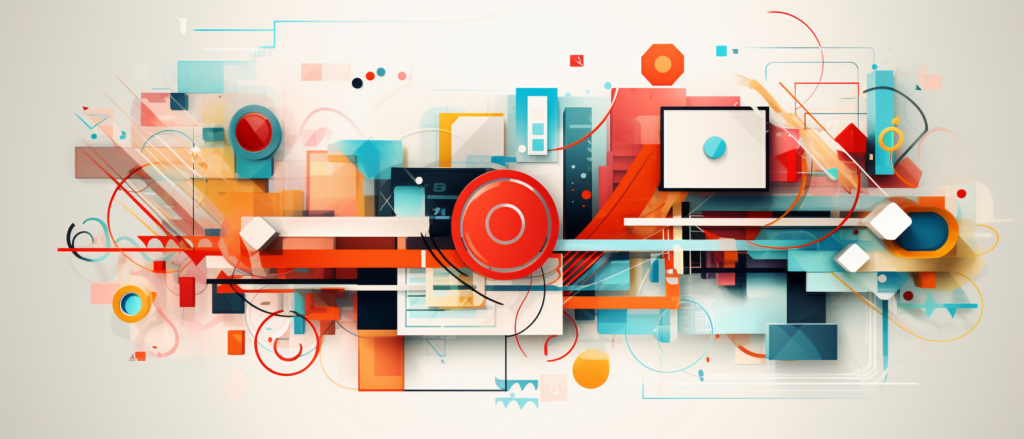Key Takeaways
✅ Blend of Old and New: While traditional forms of advertising remain effective and continue to reach a broad audience, digital advertising has become increasingly significant due to its highly targeted and measurable nature.
✅ Tech-Driven Personalization: Modern advertising is heavily reliant on technology for data analysis and machine learning, which allows for unprecedented levels of personalization and targeting. This approach can lead to enhanced customer engagement and conversion rates.
✅ Emotional Connection and Storytelling: Creating a strong emotional connection through storytelling is integral in modern advertising. Campaigns that resonate on a personal level with audiences are more likely to succeed in a crowded and highly competitive marketplace.
Introduction
Imagine a world where your choices, desires, and even the latest trends are often defined by a powerful force. That force is modern advertising, the pulsating heartbeat of the marketplace. It's everywhere, touching our lives with its digital fingers, revolutionizing how we think, act, and buy. Modern advertising doesn't just knock on your door; it's the intriguing guest at the party, whispering in your ear about things you never knew you needed.
This transformative article will take you on a journey through the vibrant landscape of modern advertising, from the explosion of digital platforms and the personalized touch of data analytics to the creative buzz of social media influencers and the age-old charm of word-of-mouth endorsements. Unlock the secrets of modern advertising and discover how it shapes our world, one click, one campaign, one story at a time. Let's dive into this digital sea and explore the colorful coral reefs of contemporary advertising together!
Digital Advertising
Digital advertising encompasses various strategies aimed at reaching audiences through digital channels. Key components include:
- Search Engine Marketing (SEM) and Search Engine Optimization (SEO): Utilizing search engines to improve visibility and attract targeted traffic.
- Social Media Platforms: Leveraging platforms like Facebook, Instagram, Twitter, and LinkedIn to engage with audiences and promote content.
- Email Marketing: Sending targeted messages to a curated list of recipients to promote products, services, or events.
- Mobile and Display Advertising: Reaching audiences through ads on mobile devices and across different websites.
- Targeted Advertising with Programmatic Buying: Utilizing automated processes to buy and place ads, with revenues anticipated to reach $135 billion by 2023.
Word-of-Mouth Advertising
Word-of-mouth advertising relies on customer endorsements and organic sharing:
- Customer Endorsements: Satisfied customers sharing positive experiences with others.
- Online Reviews and Testimonials: Public feedback that influences potential customers.
- User-Generated Content (UGC): Content created by users that can be leveraged for promotional purposes.
- eMarketer Note: Positive word-of-mouth continues to significantly influence consumer behavior.
Social Media Marketing
Social media marketing involves promoting products or services through social media platforms:
- Platforms: Utilizing various platforms like Facebook, Instagram, Snapchat, Twitter, and LinkedIn for advertising.
- Types: Employing pay-per-click (PPC) ads, sponsored content, and native advertising to reach target audiences.
- HubSpot Statistic: Marketers are diversifying their ad spend and targeting by leveraging multiple social media channels.
Influencer Marketing
Influencer marketing focuses on partnering with influencers to reach a broader audience:
- Collaborations: Working with influencers across different platforms for promotional activities.
- Authentic Storytelling: Creating sponsored posts that resonate with the influencer's audience.
- Market Evolution: Adapting strategies to address privacy concerns and changes in online tracking and ad targeting
Mobile Advertising
Mobile advertising targets users on mobile devices:
- Mobile-Optimized Web Content: Creating content that is easily accessible and viewable on mobile devices.
- In-App Ads: Placing ads within mobile applications to reach users.
- SMS Marketing Campaigns: Sending promotional messages directly to users' mobile phones.
- Modern Integration: Refining ad strategies to cater to a predominantly mobile-centric user base.

Personalization
Personalization in advertising involves tailoring content to individual preferences:
- Data-Driven Marketing: Utilizing data to inform marketing strategies and decisions.
- Customized User Experience: Employing AI and machine learning to create personalized experiences.
- Marketing Precision: Leveraging analytics and behavioral data to customize ad content for specific audiences.
Promotional Advertising
Promotional advertising focuses on incentivizing purchases through various tactics:
- Sales Promotions: Offering discounts and deals to encourage buying.
- Contests and Sweepstakes: Engaging customers through competitions and prizes.
- Product Giveaways: Distributing free samples or products to increase awareness and interest.
- Video Content in Campaigns: Utilizing video content in campaigns, with 80% of marketers recognizing its effectiveness in engagement.
Notable Campaigns
Some notable advertising campaigns include:
- Nike's "Dream Crazy" Campaign: Featuring emotionally charged messaging and alignment with social justice movements.
- Coca-Cola's "Share a Coke" Campaign: Personalizing product packaging to encourage social sharing and engagement.
- Airbnb's "Live There" Campaign: Promoting authentic travel experiences and strategically using user-generated content to differentiate the brand.
AI Marketing Engineers Recommendation
Modern advertising leverages sophisticated algorithms, big data, and machine learning to understand consumer behavior, predict trends, and deliver personalized marketing messages. It is characterized by several key features:
- Programmatic Advertising: Utilizing AI to buy and place ads in real-time, which increases efficiency and targeting precision. This method considers the user’s online behavior, ensuring that the ads served are relevant and timely.
- Personalization at Scale: AI allows for micro-targeting audiences, ensuring that content is tailored to individual preferences, which significantly increases engagement and conversion rates. Modern advertising means delivering the right message to the right person at the right time.
- Predictive Analytics: By analyzing consumer data, AI can predict future buying behaviors and trends, allowing companies to be proactive with their marketing strategies.
- Chatbots and Virtual Assistants: Enhancing customer service and user engagement through chatbots that can interact in a human-like manner, available 24/7.
- Sentiment Analysis: Understanding the emotional tone behind social media posts, reviews, and other online content to better grasp public opinion and react accordingly.
- Voice and Visual Search: Optimizing for new search modalities as consumers increasingly rely on voice assistants and visual search when looking for information and products.
- Content Generation: AI can also assist in creating content, whether that's writing simple reports or articles, generating email responses, or even helping with video production.
1. Strategic Adoption of AI: Assess current marketing strategies and identify AI-driven tools and solutions that seamlessly integrate with business goals.
2. Data Analysis and Interpretation: With vast quantities of data at your disposal, extracting actionable insights is key. AI Marketing Engineers can unleash the potential of data analytics to tailor your advertising efforts.
3. Customer Experience Enhancement: Utilize AI to improve the customer journey at every touchpoint, ensuring experiences are personalized and engaging.
4. Cross-channel Campaigns: Plan and execute cross-channel campaigns using AI to ensure a cohesive brand message and user experience across all digital platforms.
5. Continuous Learning and Adaptation: AI Marketing Engineers continually recalibrate strategies based on ongoing data analytics, ensuring your advertising efforts remain effective and evolve with the market.
6. Ethical and Privacy Considerations: Ensure that the AI tools in use are accountable, transparent, and compliant with data protection regulations like GDPR or CCPA, maintaining customer trust.
Conclusion
Modern advertising is a diverse and complex field, constantly evolving to meet the needs of businesses and consumers. Understanding the various forms, techniques, and examples of modern advertising is crucial for businesses and individuals looking to make informed decisions about their marketing strategies.
As the digital world becomes even more intertwined with our daily lives, modern advertising will continue to play a pivotal role in shaping consumer behavior, innovating promotional strategies, and driving markets forward. In an age where information is abundant and attention spans are limited, the ability of modern advertising to adapt and stand out will determine its effectiveness and impact on a global scale.
FAQs
Modern advertising is a dynamic, always-evolving field that uses a variety of channels and tools to reach and engage with consumers. It encompasses everything from traditional advertising like TV, print, and outdoor ads to digital advertising like search engines, social media, email marketing, and mobile apps. The goal of modern advertising is to effectively communicate a brand's message and value proposition to a targeted audience and persuade them to take a specific action, such as making a purchase or engaging with a brand's content.
The types of modern advertising include:
- Online advertising (search engine marketing, display advertising, social media advertising)
- Offline advertising (TV, print, outdoor)
- Affiliate marketing
- Email marketing
- Mobile advertising
- Native advertising (such as sponsored content or product placements in media)
- Influencer marketing
- Content marketing (such as blogs, videos, images, infographics, and other interactive content)
The benefits of modern advertising include:
- Reaching a larger, more targeted audience through various channels
- Increasing brand awareness and engagement with consumers
- Providing valuable insights into consumer behavior and preferences
- Generating leads and driving sales
- Building trust and credibility with customers
- Measuring and optimizing campaign performance and ROI
Modern advertising measures success through various metrics such as:
- Reach: Number of people who have seen or heard the ad
- Impressions: Number of times an ad has been displayed or delivered
- Engagement rate: Percentage of people who have interacted with the ad (liked, shared, commented, etc.)
- Click-through rate (CTR): Percentage of people who have clicked on the ad
- Conversion rate: Percentage of people who have taken a desired action (like making a purchase) after seeing the ad
- Return on investment (ROI): The amount of revenue generated vs. the cost of the advertising campaign
Modern advertising is different from traditional advertising in several ways, including:
- Use of digital channels and tools
- Greater targeting and personalization
- Real-time measurement and optimization
- Focus on engagement and brand experience, rather than just awareness
- Emphasis on storytelling and creativity
- Stronger integration with other marketing channels, such as content marketing and social media
